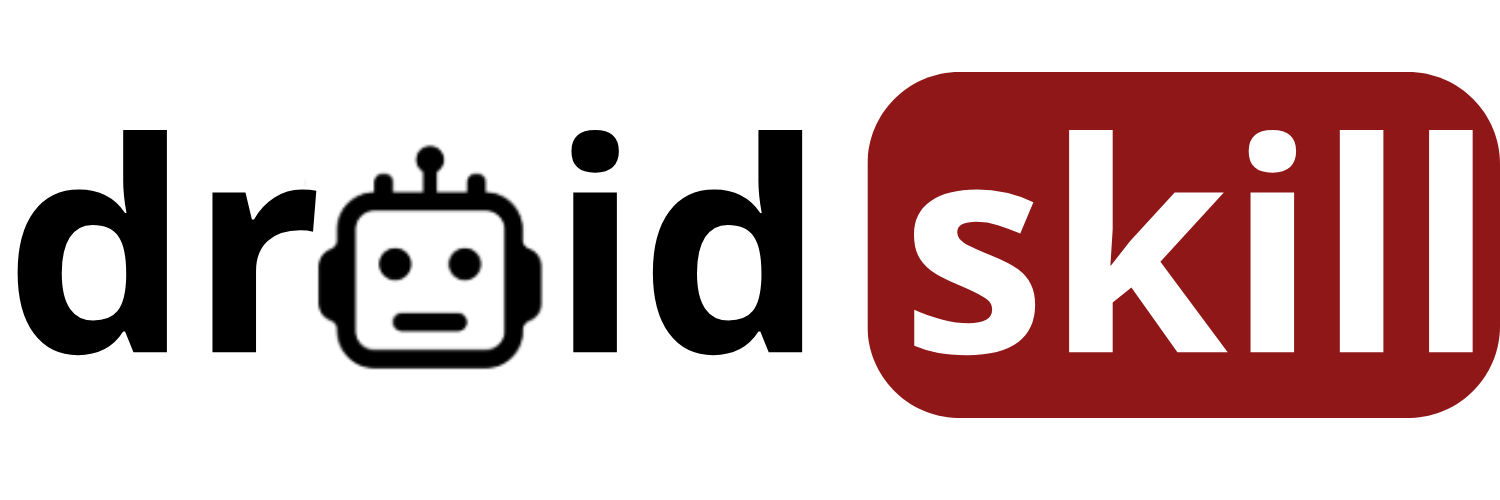Switching from iOS to Android can feel like moving to a whole new world. One of the biggest hurdles is transferring your precious data – photos, contacts, messages, and more. But fear not! With the right tools and a little know-how, you can make this transition seamless and stress-free. This guide will walk you through the best methods and apps to ensure your data arrives safely on your new Android device.
Before diving in, it's crucial to back up your iOS device. This provides a safety net in case anything goes wrong during the transfer process. You can back up your iPhone or iPad to iCloud or your computer using iTunes (or Finder on newer macOS versions). iCloud is convenient for wireless backups, while a computer backup is generally faster and more comprehensive.
Now, let's explore the top apps and techniques for transferring your data:
1. Move to Android
This official app from Google is designed specifically for migrating from iOS to Android. It wirelessly transfers your contacts, message history, photos, videos, bookmarks, calendar events, and even some apps. The app guides you through the process step-by-step, making it incredibly user-friendly, even for those who aren't tech-savvy.
Move to Android creates a private Wi-Fi network between your devices, ensuring a secure and direct transfer. It also handles the crucial task of disabling iMessage on your iPhone, preventing you from missing messages after the switch. This is a vital step often overlooked, leading to frustration for new Android users.
The app also offers to transfer your iCloud calendar and photos. For photos, it initiates a request to transfer them to Google Photos, simplifying the process of getting your memories onto your new device. It's a comprehensive solution that covers most of your essential data.
Pros: Easy to use, official Google app, transfers a wide range of data, disables iMessage.
Cons: Requires a stable Wi-Fi connection, transfer speed can vary depending on the amount of data.
Download Move to Android from the Play StoreSearch for Move to Android on the Play Store
2. SHAREit
SHAREit is a versatile file-sharing app that goes beyond just transferring data from iOS to Android. It allows you to transfer files of any type and size between devices, making it a great option for moving large video files or documents. It uses a direct Wi-Fi connection, offering significantly faster transfer speeds than Bluetooth.
While SHAREit isn't specifically designed for iOS to Android migration like Move to Android, it provides more flexibility in choosing which files to transfer. You can manually select specific photos, videos, or documents to move, giving you greater control over the process. This is particularly useful if you only want to transfer certain data and leave the rest behind.
However, SHAREit does come with some caveats. It's known for displaying ads and sometimes promoting other apps. The user interface can also feel a bit cluttered compared to more streamlined data transfer apps. Despite these drawbacks, its fast transfer speeds and file-sharing capabilities make it a worthwhile option.
Pros: Fast transfer speeds, supports all file types, cross-platform compatibility.
Cons: Contains ads, cluttered user interface, not specifically designed for iOS to Android migration.
Download SHAREit from the Play StoreSearch for SHAREit on the Play Store
3. AnyTrans
AnyTrans is a comprehensive data management tool that offers a wide range of features, including iOS to Android data transfer. It supports transferring various types of data, including contacts, messages, photos, videos, music, books, and even app data (for some apps). It provides a user-friendly interface and a seamless transfer experience.
One of the key advantages of AnyTrans is its ability to transfer data selectively. You can preview your data and choose exactly what you want to move to your Android device. This is particularly useful if you have a lot of data on your iPhone and only want to transfer specific items. It also supports transferring data from iCloud backups, allowing you to restore your data even if you no longer have your old iPhone.
AnyTrans also offers features like ringtone maker, app downloader, and iOS system recovery. However, it's important to note that AnyTrans is a paid software, although it offers a free trial. The free trial allows you to transfer a limited amount of data, giving you a chance to test the software before purchasing a license.
Pros: Comprehensive data transfer, selective data transfer, supports iCloud backups, user-friendly interface.
Cons: Paid software, free trial has limitations.
Search for AnyTrans on the Play Store
4. Dr.Fone - Phone Transfer
Dr.Fone - Phone Transfer is another powerful tool designed for transferring data between different phone operating systems, including iOS and Android. It supports a wide range of data types, such as contacts, messages, photos, videos, music, call logs, and even app data. It offers a one-click transfer solution, making the process quick and easy.
One of the standout features of Dr.Fone - Phone Transfer is its ability to transfer data directly between phones, without the need for a computer. This is particularly convenient if you don't have access to a computer or prefer a more direct transfer method. It also supports transferring data from iCloud backups, allowing you to restore your data even if you no longer have your old iPhone.
Dr.Fone - Phone Transfer also offers other features, such as phone backup and restore, phone unlocking, and system repair. However, like AnyTrans, Dr.Fone - Phone Transfer is a paid software, although it offers a free trial. The free trial allows you to transfer a limited amount of data, giving you a chance to test the software before purchasing a license.
Pros: One-click transfer, direct phone-to-phone transfer, supports iCloud backups, wide range of features.
Cons: Paid software, free trial has limitations.
Search for Dr.Fone - Phone Transfer on the Play Store
5. MobileTrans - Copy Data to Android
MobileTrans - Copy Data to Android simplifies the process of transferring data from your old iPhone to your new Android device. It focuses specifically on the data transfer aspect, offering a clean and intuitive interface. It supports transferring contacts, messages, photos, videos, music, and more.
MobileTrans - Copy Data to Android offers both a computer-based and a phone-to-phone transfer option. The computer-based option allows you to connect both your iPhone and Android device to your computer and transfer data directly. The phone-to-phone option allows you to transfer data wirelessly, without the need for a computer.
The app also includes features like WhatsApp transfer, allowing you to move your WhatsApp chats and media from your iPhone to your Android device. This is a crucial feature for many users who rely heavily on WhatsApp for communication. However, MobileTrans - Copy Data to Android is a paid app, although it offers a free trial with limited functionality.
Pros: Simple and intuitive interface, computer-based and phone-to-phone transfer options, WhatsApp transfer feature.
Cons: Paid app, free trial has limitations.
Search for MobileTrans - Copy Data to Android on the Play Store
Beyond Apps: Cloud Services and Manual Transfer
While apps offer convenient solutions, don't forget about the power of cloud services. Google Photos is excellent for backing up and syncing your photos and videos across devices. Simply install Google Photos on your iPhone, back up your media, and then access it on your Android device. Similarly, Google Drive can be used to transfer documents and other files.
For contacts, you can sync your iPhone contacts with your Google account. Go to Settings > Mail, Contacts, Calendars > Add Account > Google. Once synced, your contacts will automatically appear on your Android device. This is a reliable and straightforward method for transferring your contact information.
In some cases, manual transfer might be necessary. For example, if you have specific files that aren't supported by the apps or cloud services, you can connect your iPhone to your computer and manually copy the files to your Android device. This requires a bit more effort but provides the most control over the transfer process.
Tips for a Smooth Transition
1. Ensure a Stable Wi-Fi Connection: A stable Wi-Fi connection is crucial for wireless data transfer. Avoid transferring data over a public Wi-Fi network, as it can be slow and insecure.
2. Charge Your Devices: Make sure both your iPhone and Android device are fully charged before starting the transfer process. This will prevent interruptions due to low battery.
3. Disable iMessage: As mentioned earlier, disabling iMessage on your iPhone is essential to avoid missing messages after the switch. Move to Android handles this automatically, but if you're using another method, be sure to disable iMessage manually.
4. Be Patient: Data transfer can take time, especially if you have a lot of data. Be patient and avoid interrupting the process. Let the apps or services do their job.
5. Verify Your Data: After the transfer is complete, take some time to verify that all your data has been transferred correctly. Check your contacts, messages, photos, and other important files to ensure everything is in place.
6. Explore Your New Android Device: Once your data is transferred, take some time to explore your new Android device and familiarize yourself with its features and settings. Android offers a lot of customization options, so you can tailor it to your preferences.
Addressing Common Issues
1. Missing Messages: If you're missing messages after the switch, it's likely due to iMessage not being disabled properly. Go to Settings > Messages on your iPhone and turn off iMessage. Then, restart your Android device.
2. Slow Transfer Speeds: Slow transfer speeds can be caused by a weak Wi-Fi connection or a large amount of data. Try moving closer to your Wi-Fi router or transferring data in smaller batches.
3. Incompatible File Formats: Some file formats may not be compatible with Android. You may need to convert these files to a compatible format before transferring them.
4. App Data Transfer Issues: Not all apps support data transfer between iOS and Android. Check with the app developer to see if there's a way to transfer your app data.
Conclusion
Switching from iOS to Android doesn't have to be a daunting task. With the right tools and a little preparation, you can transfer your data seamlessly and enjoy your new Android experience. Whether you choose to use a dedicated data transfer app, cloud services, or manual transfer, the key is to plan ahead and follow the steps carefully. By following the tips and techniques outlined in this guide, you can ensure a smooth and stress-free transition.
Remember to back up your data before starting the transfer process, and don't hesitate to seek help from online resources or tech support if you encounter any issues. Welcome to the world of Android!


